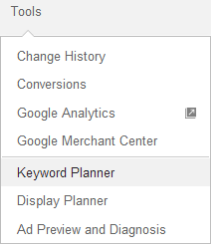What’s Scary About Self-Auditing Your Website
Auditing your own website can be a scary thing for us SEOs. We think of ourselves as invincible and pride ourselves in turning around poor websites into Page One successes. But the problems about auditing your own SEO is that you have to face your fears and possibly accept that you’ve been neglecting your website, to focus on your clients. If you keep on that road, you’re own website will fade away into the Google graveyard somewhere on Page 10. So what do some of our fellow SEO professionals say about auditing their websites?
Thomas Ballantyne said that site restructures keep him up at night. Plus removing content from a website can be scary because you might be loosing the few visitors it receives, and someone spent the time to create that content.
For Casey Markee, page speed is a huge issue that scares him when he audits his own website, especially if your first byte is slower than what Google likes.
Gregg Gifford, on the other hand, isn’t afraid to do his own site, but reporting errors to his higher ups make his hairs stand on end.
As for me, the scariest thing about auditing your own website is to realize that you broke the most obvious step; title tags. Sometimes our websites can get so big and you the work keeps you so busy that you forget to put in your title tags. It’s such a simple thing to do, that realizing you forgot to put in your title tag is simply embarrassing.
1. Keywords for your Title Tags
The purpose of having title tags is to help Google identify the topic of your content, as well as attracting eyes while on the Google SERP. So doing keyword research for your title tags isn’t as important as it used to be but can still help you figure out what people are typing.
- To figure out if there are relevant keywords with low competition and good search volume.
- To figure out what keywords people are searching with.
To get ideas as to what keywords you should use in your title tags you should go to Google Adwords, and in the top header go to Tools > Keyword Planner
You’ll be given four options as to how you can use Google Keyword Planner. You can use whatever option you feel best fits your needs for the job you’re completing. I usually choose the first option “Search for new keyword and ad group ideas.”
You’ll get a list of keyword groups that you can look at individually or you can look at the groups. Pick through the keyword lists and try to find different words that meet the criteria of good search volume and low competition. Don’t forget to look at longer-tail keywords that some of the competition might skip over.
For example: If we are looking for keywords for a Colorado based Real Estate title tag, we want keywords that relate to the website with comparably lower competition, and comparably higher search volume.

After you find some good keywords just transfer them back to your title tags. But don’t forget that exact match keywords in your title tags aren’t as important as writing something that makes sense for the content. Try and use the keywords research as inspiration as opposed to simply copying and pasting keywords into your title tags.
Good luck moving forward and don’t get too scared auditing your own website.
Austin Faux
Recent Posts
Recent Comments
- Shannon Thammasiene on How to Create a Successful Blog
- Sarah on How to Create a Successful Blog
- How to Create a Successful Blog on 5 Free Keyword Research Tools that will Rock your Socks
- Olivier Hamphrey on This Week In Social Media
- Richard Dickerson on Use Email to Sell without Selling












